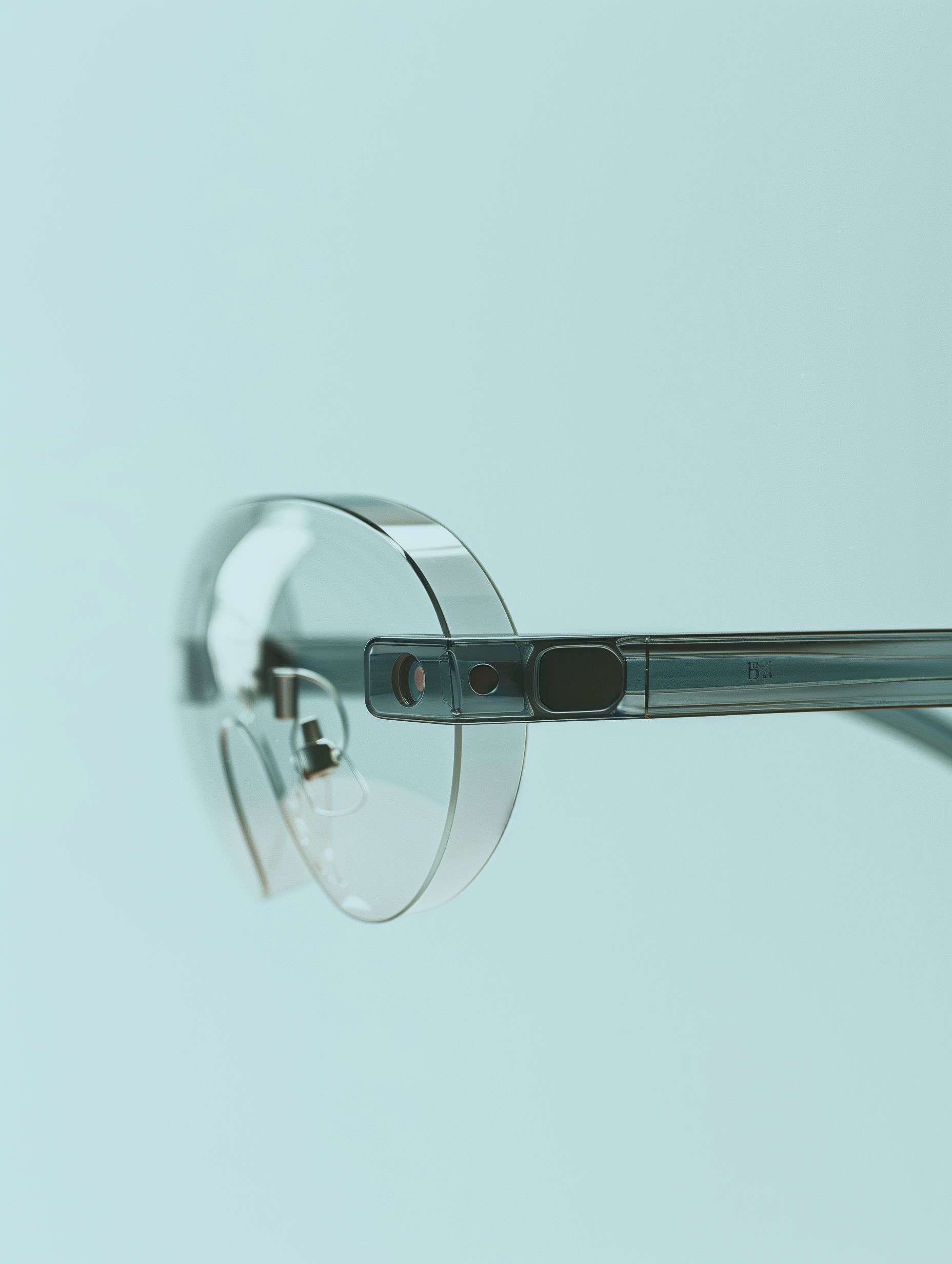OVERVIEW
A vision-first solution that helps reduce eye strain from screen exposure by adapting the way we interact with technology.
Design Research
Prototyping
My Role
Duration
6 weeks
This project looks at how we can protect our eyes in a world where screens are part of almost everything we do. Whether it’s work, scrolling, or entertainment, long screen time takes a toll on our vision and well-being.
Smart glasses are redefining technology, seamlessly blending innovation with everyday convenience. Ocu enhances this evolution, a compact yet powerful feature that integrates blink detection, helping users develop healthier screen habits and protect their eye health.
HOW DO WE FIX THIS?
Prototype Image 1
Prototype Image 2
On average, we blink about 17 times per minute and when we stare at a screen it drastically decreases our blink rate to about only 4 times per minute.
EXPLORING DIGITAL HABITS
Digital eye strain, a major yet overlooked issue, causes dryness, discomfort, headaches, and potential long-term vision problems.
One of its most common symptoms is dry eyes, caused by a significant decrease in blinking when people are absorbed in watching a show or playing a video game.
Over time, this reduced blink rate leaves the front surface of the eyes dry and vulnerable, impacting overall eye health.
What if we could help users change their behavior by integrating with something bigger—an innovation already on the rise? This led to the idea of using smart glasses as a platform for eye health monitoring, and that’s how Ocu was born.
Ocu combines real-time eye tracking, machine learning, and haptic feedback into a seamless wearable system that helps users manage digital fatigue.
WORKING SYSTEM
System Diagram of Ocu
The ESP32-S3 camera module streams video of the user’s eyes. A trained TensorFlow-Keras model processes each frame to detect whether the eyes are open or closed, enabling accurate blink detection on the go.
Real-time eye tracking with machine learning classification
Video stream from ESP32 streamed over http server
If the system detects fewer than three blinks within 15 seconds, it engages a vibration motor to remind the user to blink, promoting healthier screen-time habits without disrupting workflow.
Triggers gentle haptic alerts for reduced blink rates
All hardware is embedded into a lightweight, wearable frame. The user’s blink data is visualized using Bokeh to reveal patterns over time and support behavior reflection or future system tuning.
Integrated into glasses with visualized blink patterns
Graph plotted using Bokeh software. The x-axis represents the frame number, while the y-axis indicates the state of the eye (open or closed)
DEMO VIDEO
Real-time glimpse of Ocu in action
Enhancing Ocu’s autonomy by reducing reliance on external processing, and refining the precision of haptic feedback to respond more intelligently to individual blink patterns and context.
FUTURE STEPS
The graph now displays real-time updates of blinks, but the next step is to assess blinking behavior for a specific time window.
Add a switch to the prototype that enables or disables the blinking system as needed.
Modify the prototype to function solely with the ESP32 microcontroller, removing its dependence on the machine learning model for blink detection.








